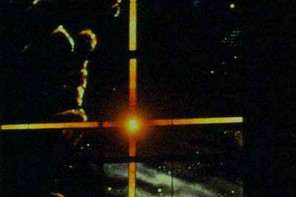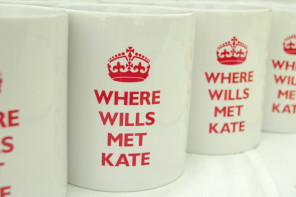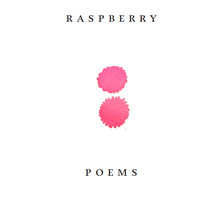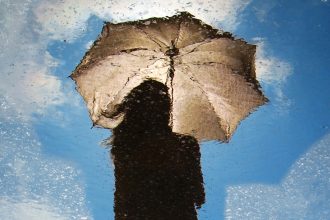She was the single artificer of the world
In which she sang. And when she sang, the sea,
Whatever self it had, became the self
That was her song, for she was the maker. Then we,
As we beheld her striding there alone,
Knew that there never was a world for her
Except the one she sang and, by singing, made.
Wallace Stevens, excerpt from “The Idea of Order at Key West”
Who makes a clearing makes a work of art,
The true world’s Sabbath trees in festival
Around it. And the stepping stream, a part
Of Sabbath also, flows past, by its fall
Made musical, making the hillslope by
Its fall, and still at rest in falling, song
Rising.Wendell Berry, from A Timbered Choir, page 59
These poems interested me because they both use music as a metaphor for either actually or figuratively making a world or place. “World-making,” as the theme also finds itself in academic discussions, is often related with the arts or creative practices more generally. In particular, the work of Amos Wilder, Nelson Goodman, Martin Heidegger, and Nicholas Wolterstorff explore these themes of art making a world, each in their own way. And while this post will not delve too deep into that philosophical milieu, I wanted to at least briefly reflect on one issue related to the topic: the relationship between the imagined world and the real world.
What interests me about this concept of world-making is that we have to see the artist’s “world” that they have made as necessarily separate from, yet connected to, the world in which we live. Amos Wilder, for instance, addresses this point in his article “Story and Story-World.” He says that through “all the arts of speech,” we are engaging in the practice of “world-making,” and that this poetic practice is always related to the real, lived world. [1]In other words, there is a necessary connection between the real and the imagined.
Lived experience, Wilder suggests, is necessarily part of the action of world-making. The making of a world through narrative and story, therefore, is “deeply rooted” in our desire to be placed, in our “quest for orientation.” [2] Stories not only answer the questions of what and how, but also where; they orient us in the world. Wendell Berry similarly suggests the relationship between orientation and creativity, when he recommends, “One accepts the place, that is, not just as circumstance, but as part of the informing ambiance of one’s mind and imagination.” [3] Place, and everything else in the real world, informs the artistic imagination, so that even when the artist seems to be “making something up,” they are pulling, at least in part, from a storehouse of particular things that they have encountered in the real world.
This relationship between the real and the imagined highlights for me the importance of cultivating our relationships to places in the created world. If the worlds we make in our art are connected to our real worlds that we ordinarily inhabit, then we must begin to see how our attitudes about place affect how we make our art and to what end we make it.
[1] Amos N Wilder, “Story and Story-World,” Interpretation: A Journal of Bible and Theology XXXVII, no. 1 (January 1983)., 354.
[2] Ibid., 360.
[3] Wendell Berry, Imagination in Place (Washington D. C. : Counterpoint, 2010)., 12.





Jenn, thanks for this really interesting post about world-making. I have a question about how world-making is related to the arts generally. Do the thinkers that you discuss argue that all artistic creativity is world-making? For example, it is easy for me to see how a story like Tolkein’s Lord of the Rings, or a TV series like Star Trek, are examples of world-making. But it is harder for me to see how things without narrative structure or as much complexity are examples of world-making. Are things such as quilts, furniture, and shortbread examples of world-making? Perhaps your concept of orientation could help in these latter cases. Does all making orient us in the world? Do you have any thoughts?
Jim,
Thanks for thoughtful question as always. I’m not familiar enough with all of these scholars’ whole body of work to know the answer totally, but here’s what I do know:
The question of orientation at least applies in the case of two of them–Wilder and Heidegger. Wilder, who I quote above, is mostly talking about narrative, so you’re right that its harder to apply these thoughts to art that isn’t necessarily a narrative form. But he does say in the article: “We may well remind ourselves that other arts serve the general task of orientation in other ways. The plastic and graphic arts, for example, are first of all spacial. Where narrative has sought to bring extension in time under control these arts have furthered the task of world-making by bringing extension to space under control. By marking, shaping, and building they articulate the non-temporal place of our being, with special reference to sight and touch.” So for him at least, the fact that making of all kinds is a spatial activity of sorts would put it in the realm of world-making.
This is similar to Heidegger, who talking about the relationship between building and dwelling. Now, Heidegger is still largely incomprehensible to me at times, so what I take from his writing may very well be superficial. But it seems that what he is talking about is the fact that in order to “dwell,” which has tons of connotations that I can’t flesh out here, we engage in practices of making. So he connects the arts particularly to the way that we dwell in places. As far as I can tell, the act of making alone serves in this world-building process, but beyond that, I can’t really say too much as of yet. He has a very in-depth (and again I say, largely incomprehensible to me at this point!) ontology of art.
I think I would agree in many ways with this notion of “making” as orienting us in the world, which is why I want to draw the connection of the arts as a “placemaking” activity. I think all the arts do this in various ways. Fictional narrative is obviously very different from quiltmaking or pottery, and I don’t want to argue otherwise. But I do think you can place them together (no pun intended) in regard to how they relate to place and how they relate us to place.
Thanks for the question and helping me to think through the issue.
My painting professor believed that it took a number of years for an artists sense of place to begin to come out in the work, be it abstract or narrative. I’ve noticed this in my own work, much to my own delight. I think world-making and story telling is core to what it means to be human. I also believe that to be human means to be an artist/story teller on some level. In the last 3 years, I’ve been moving away from abstract sculptural works to combine images with words in a narrative fashion.
http://www.debbieyoungart.com/
http://faithartfarming.blogspot.com/